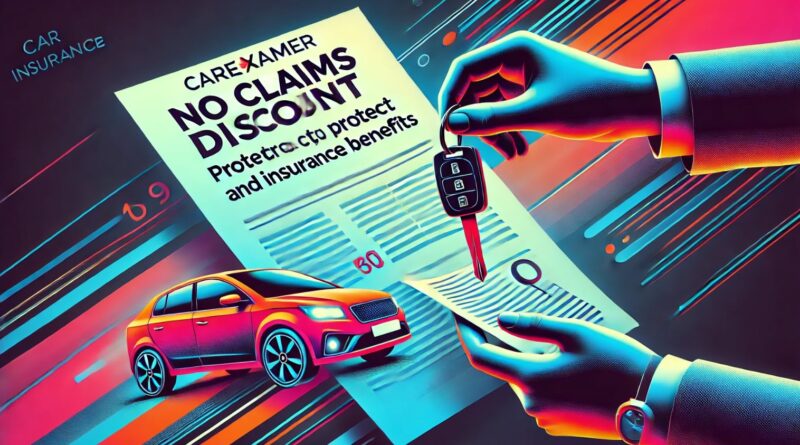Guide Should You Protect Your No Claims Discount?
But here’s the big question: should you protect your no claims discount? Let’s break it down, explain how it works, and figure out if it’s worth protecting. When it comes to saving money on your car insurance, building up a no claims discount (NCD) is one of the most effective ways to lower your premiums. If you’ve managed to drive claim-free for a few years, you’re probably enjoying some pretty decent savings.
What Exactly Is a No Claims Discount?
A no claims discount (also known as a no claims bonus) is a reward from your insurer for not making any claims. Each year you drive without making a claim, your discount increases. Over time, this can reduce the cost of your car insurance significantly. The longer you go without a claim, the bigger your discount. It’s basically your insurance company’s way of saying, “Thanks for being a safe driver.”
For example, after one year of no claims, you might get a small discount on your renewal. Fast forward five or more years, and that discount could be as much as 60-70% off your premium. Pretty sweet, right?
How Does a No Claims Discount Work?
The idea is simple: every year you drive without making a claim, your discount grows. Typically, after around five years, you’ll hit the maximum discount offered by most insurers. But here’s the catch: if you do make a claim, especially if it’s your fault, your discount could be reduced—or you could lose it altogether.
Here’s a rough guide to how no claims discounts grow:
- 1 year no claims: 20% discount
- 2 years no claims: 30% discount
- 3 years no claims: 40% discount
- 4 years no claims: 50% discount
- 5+ years no claims: 60-70% discount
The exact percentage varies by insurer, but that’s the general idea.
What Does It Mean to Protect Your No Claims Discount?
No claims discount protection is an add-on to your car insurance that allows you to “protect” your discount even if you make a claim. Normally, making a claim could slash your discount or wipe it out completely. But if you’ve added no claims protection, you’re allowed to make a certain number of claims—usually one or two over a set period—without affecting your discount.
It’s important to understand that protecting your discount doesn’t mean your premium won’t go up after an accident. It just means you won’t lose the discount you’ve accumulated. Your base premium could still increase after a claim, but the discount you’ve built up stays intact.
Should You Protect Your No Claims Discount?
Deciding whether to protect your no claims discount depends on a few things. Let’s look at the key factors that can help you decide:
- How Valuable Is Your Discount?
- If you’ve built up several years of no claims, you’re likely getting a decent chunk of money knocked off your premium. Protecting that discount might be worth it, especially if it’s saving you hundreds of pounds each year.
- Your Driving Habits and Risk Factors
- How often are you on the road? Do you drive in busy areas or on quiet roads? If you drive frequently or in higher-risk situations, it might make sense to protect your discount. On the other hand, if you only use your car occasionally, you might feel confident skipping the protection.
- Cost of Protection
- Protecting your no claims discount comes at an extra cost. Compare how much it costs to add this feature with how much your discount is saving you. If the protection cost is low and your discount is substantial, it could be a no-brainer.
- How Many Claims Are Allowed?
- Check the details of the policy. Most no claims protection plans allow you to make one or two claims in a certain period (often over three years). If you exceed that limit, your discount could still be affected.
- Your Premium Could Still Go Up
- Even if you protect your discount, your overall premium might still increase after an accident. Your no claims bonus will be applied to a higher base premium, but the discount itself stays intact.
Pros and Cons of Protecting Your No Claims Discount
Here’s a quick rundown of the pros and cons to help you make a decision:
Pros:
- Protects the discount you’ve built up over the years, even if you make a claim.
- Offers peace of mind, especially if you’ve got a significant discount.
- Prevents a sharp increase in your premiums after a claim.
Cons:
- It costs extra, so you need to weigh up whether it’s worth it for you.
- It doesn’t stop your overall premium from going up after an accident—it just preserves your discount.
- You can only make a limited number of claims before your discount is affected.
What Happens If You Don’t Protect Your No Claims Discount?
If you decide not to protect your discount and then make a claim, you could lose some or all of your no claims bonus. Typically, insurers reduce your discount by a set number of years for each claim. For example, if you have five years of no claims and make an at-fault claim, your discount might drop to three years. Multiple claims in a short period could wipe out your discount entirely.
So, Is It Worth Protecting Your No Claims Discount?
It all depends on how much your discount is saving you and how much you value that peace of mind. If you’ve built up a significant no claims discount and want to ensure that one accident doesn’t wipe it out, protecting it could be a smart move. However, if the cost of protection outweighs the potential savings, you might decide to take your chances.
Buying a used VW. Buying used vauxhall, BMW, Jaguar, Ford, Volvo, Range rover, Bentley, Aston Martin, Porsche, Ferrari, Lamborghini, Maserati, Hyundai, Tesla, Honda, Pagani

